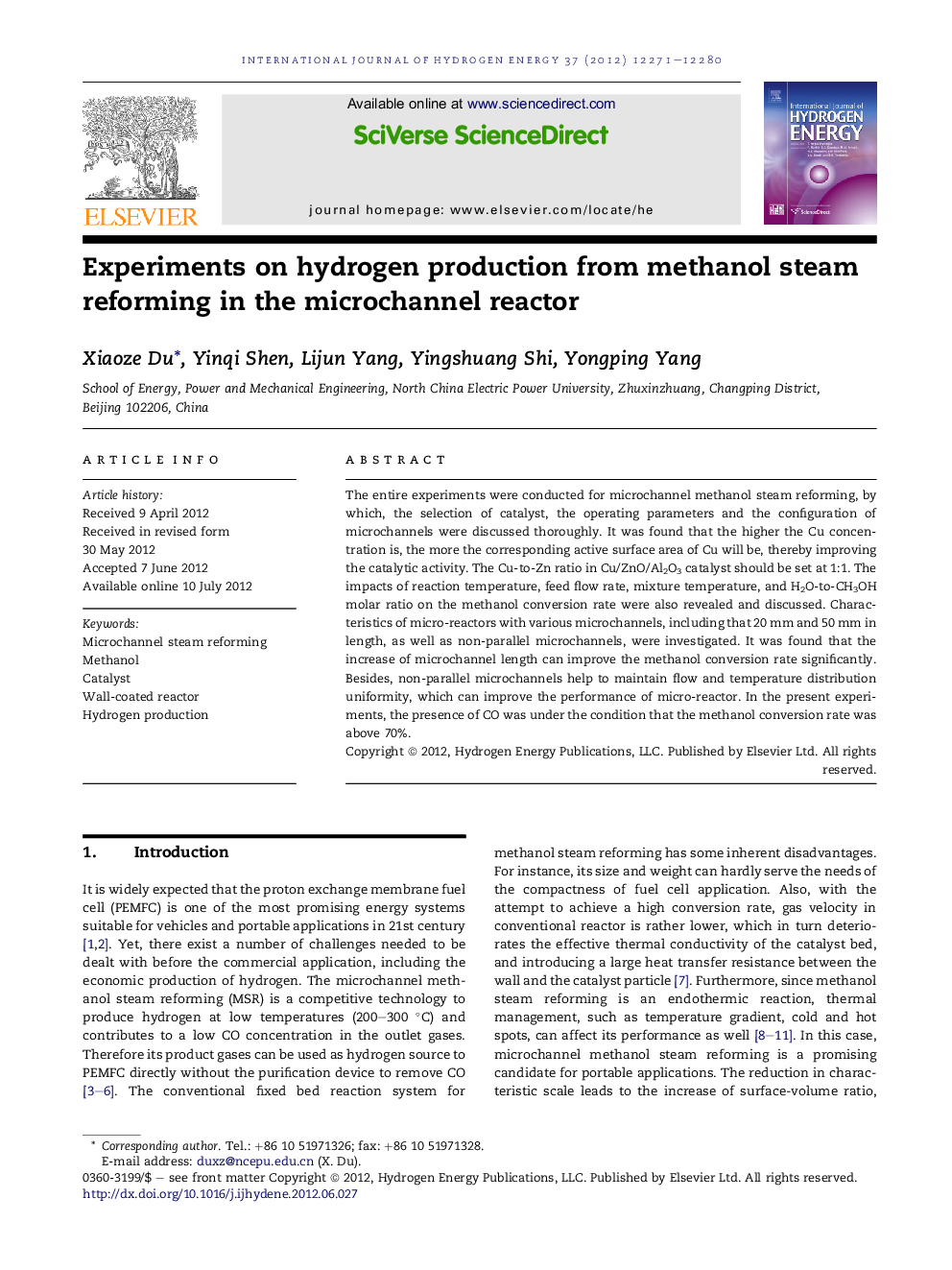| Article ID | Journal | Published Year | Pages | File Type |
|---|---|---|---|---|
| 1271062 | International Journal of Hydrogen Energy | 2012 | 10 Pages |
The entire experiments were conducted for microchannel methanol steam reforming, by which, the selection of catalyst, the operating parameters and the configuration of microchannels were discussed thoroughly. It was found that the higher the Cu concentration is, the more the corresponding active surface area of Cu will be, thereby improving the catalytic activity. The Cu-to-Zn ratio in Cu/ZnO/Al2O3 catalyst should be set at 1:1. The impacts of reaction temperature, feed flow rate, mixture temperature, and H2O-to-CH3OH molar ratio on the methanol conversion rate were also revealed and discussed. Characteristics of micro-reactors with various microchannels, including that 20 mm and 50 mm in length, as well as non-parallel microchannels, were investigated. It was found that the increase of microchannel length can improve the methanol conversion rate significantly. Besides, non-parallel microchannels help to maintain flow and temperature distribution uniformity, which can improve the performance of micro-reactor. In the present experiments, the presence of CO was under the condition that the methanol conversion rate was above 70%.
► The entire experiments of microchannel methanol steam reforming. ► Influences of catalyst, operating parameters and microchannel configuration. ► Micro-reactor with non-parallel channels for methanol steam reforming.
